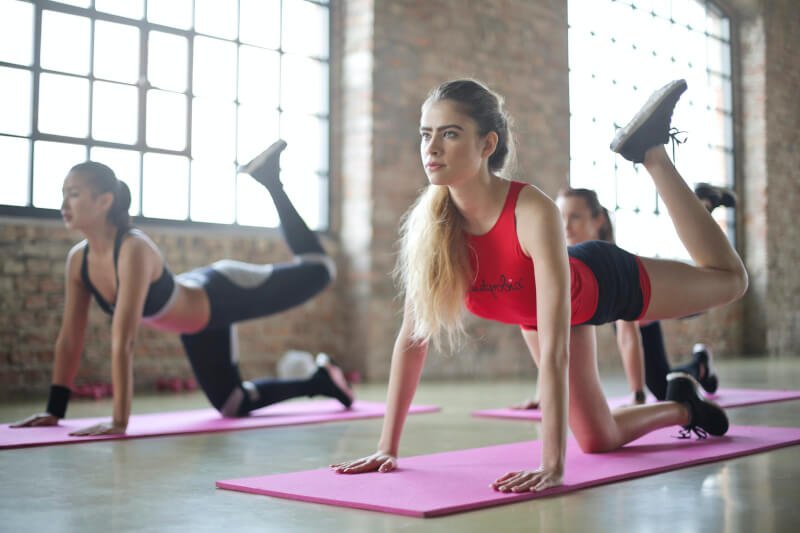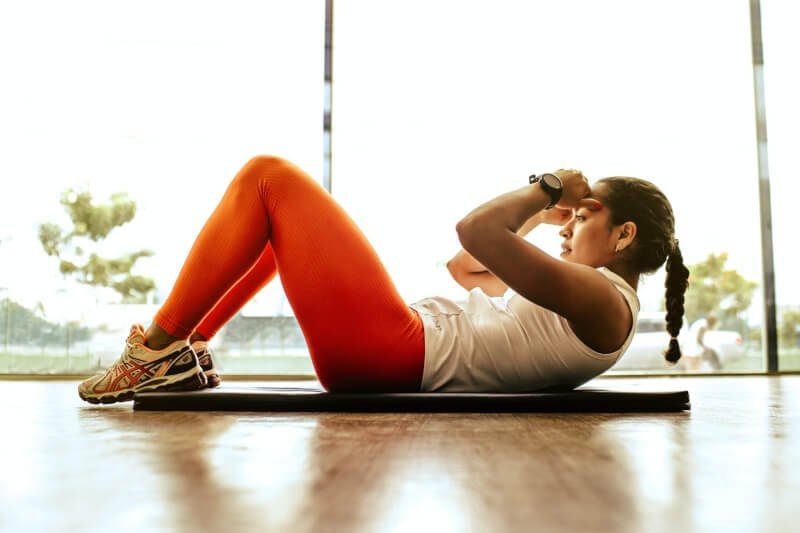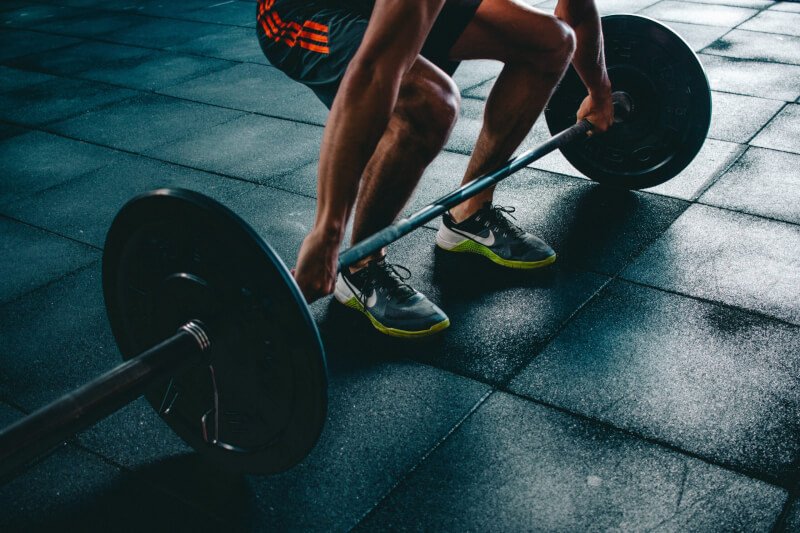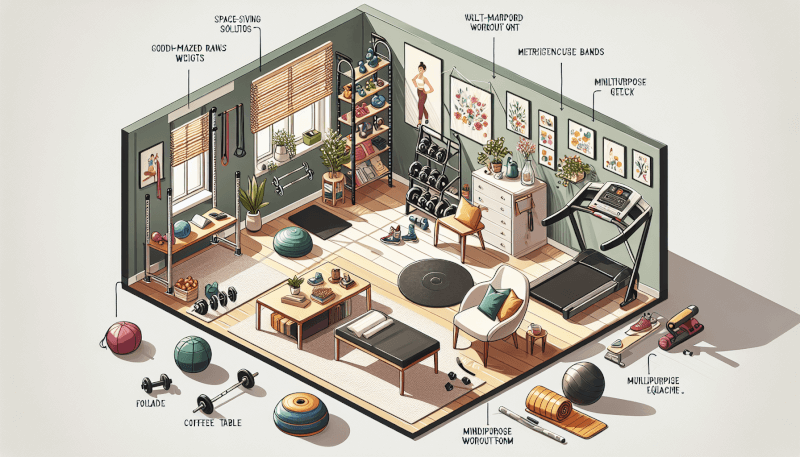Are you tired of expensive gym memberships and crowded workout spaces? Look no further! This article will guide you on how to create your very own DIY home gym without breaking the bank. Discover innovative ways to transform your living space into a fitness haven, using affordable and versatile equipment. From space-saving strategies to budget-friendly equipment options, we’ve got you covered. Get ready to save money while maintaining your fitness goals in the comfort of your own home.

Choosing the Right Space for Your Home Gym
Evaluate available space
When choosing the right space for your home gym, it’s important to evaluate the available space in your home. Determine whether you have a spare room, a corner in your basement, or an unused space in your garage that can be converted into a functional workout area. Consider the square footage and ensure that you have enough room to fit essential equipment and move around comfortably.
Consider noise and ventilation
Another factor to consider when choosing the right space for your home gym is noise and ventilation. If you live in an apartment building or have neighbors close by, it’s essential to choose a space that will minimize noise transfer. Consider any windows or doors that can be opened for proper ventilation to ensure a comfortable and fresh workout environment.
Ensure proper flooring
Proper flooring is crucial for your home gym as it provides stability, safety, and protects your existing flooring from any potential damage. Look for flooring options that are durable, non-slip, and easy to clean. Materials such as rubber or foam tiles are popular choices for home gyms. They provide shock absorption, reduce noise, and can be easily installed or removed, making them a cost-effective option for DIY gym flooring.
Setting a Budget
Determine your budget
Before you begin creating your home gym, it’s essential to determine your budget. Consider how much you are willing to invest in your fitness space, including the cost of equipment, flooring, and any additional accessories. Setting a clear budget will help you prioritize your expenses and avoid overspending.
Do thorough research
To make the most of your budget, do thorough research on the equipment and accessories you’ll need for your home gym. Look for reputable brands, read reviews, and compare prices to ensure you’re getting the best value for your money. Take note of the essential equipment for your workout routine and identify any potential alternatives or cost-saving options that can fit within your budget.
Look for discounts and second-hand equipment
To further stretch your budget, keep an eye out for discounts and sales on fitness equipment. Many retailers offer periodic discounts or promotions, especially during holiday seasons or special events. Additionally, consider purchasing second-hand equipment from online marketplaces or local classified ads to save money. Just make sure to inspect the equipment carefully and ensure that it is in good working condition before making a purchase.

Essential Equipment for a Home Gym
Cardiovascular equipment
Cardiovascular exercises are an essential part of any fitness routine. Consider investing in cardiovascular equipment such as a treadmill, stationary bike, or elliptical machine. These machines provide a convenient way to boost your heart rate, burn calories, and improve your overall cardiovascular health. Choose equipment that aligns with your fitness goals and preferences.
Strength training equipment
Strength training is crucial for building muscle, improving bone density, and enhancing overall strength. Invest in strength training equipment such as dumbbells, kettlebells, and resistance bands. These versatile tools can be used for a wide range of exercises, targeting different muscle groups. Start with a few different weights or resistance levels and gradually increase as you progress.
Multipurpose equipment
To maximize efficiency and save space in your home gym, consider investing in multipurpose equipment. For example, adjustable weight benches allow you to perform various exercises, including chest presses, shoulder presses, and leg curls. Additionally, suspension trainers, such as TRX, can be mounted on walls or doors and offer countless exercise options for strength training and core stability.
Building Your Own Workout Station
DIY pull-up bar
A pull-up bar is a great addition to any home gym, providing an effective upper body workout. Consider building a DIY pull-up bar using sturdy materials such as metal pipes or wooden beams. Ensure that the bar is securely mounted to a wall or ceiling, allowing you to safely perform pull-ups and chin-ups.
DIY squat rack
If you’re into weightlifting and squat exercises, building a DIY squat rack can save you money while still providing a safe and sturdy structure. Use sturdy metal or wooden beams to construct the frame, making sure it can support the weight you’ll be lifting. Consider adding safety bars or adjustable J-hooks to further enhance safety during heavy lifting.
DIY bench press
A bench press is a versatile piece of equipment for upper body strength training. Build your own DIY bench press using durable materials such as wood and sturdy padding. Ensure that the bench provides proper support and stability for various lifting exercises, such as chest presses, shoulder presses, and tricep dips.

Functional and Space-Saving Equipment
Resistance bands
Resistance bands are compact, affordable, and versatile tools that can provide a full-body workout. They come in different resistance levels, allowing you to gradually increase the intensity of your exercises as you progress. Resistance bands can be used for strength training, stretching, and even cardiovascular exercises, providing endless possibilities for a comprehensive workout.
Jump rope
A jump rope is an excellent addition to a home gym, providing a convenient and effective cardiovascular workout. Jumping rope burns calories, improves coordination, and increases cardiovascular endurance. Look for a high-quality jump rope with adjustable length to ensure a proper fit, and consider adding weighted handles for an extra challenge.
Adjustable dumbbells
Investing in a set of adjustable dumbbells eliminates the need for multiple pairs of dumbbells, saving space and money. These versatile weights allow you to adjust the weight to your desired level, making them suitable for a wide range of exercises. Look for a set that provides a wide range of weight options, ensuring that it can accommodate your strength training needs.
Creating a Safe and Comfortable Environment
Proper lighting and mirrors
Proper lighting is essential for creating a safe and comfortable workout environment. Ensure that your home gym is well-lit, preferably with natural light or bright LED bulbs. Install mirrors on the walls to allow for proper form checks during exercises and enhance the visual appeal of your home gym.
Ventilation and airflow
Good ventilation and airflow are crucial for maintaining a comfortable and fresh environment in your home gym. If your space has windows, open them during workouts to let in fresh air. Consider installing a ceiling fan or having a portable fan to improve air circulation and keep the space cool during intense workouts.
Safety precautions and first aid kit
Safety should be a top priority in your home gym. Make sure to follow proper form and technique when exercising to avoid injuries. Additionally, keep a first aid kit handy with essential items such as bandages, ice packs, and disinfectant. Familiarize yourself with basic first aid procedures and have emergency contact numbers readily available.

Designing the Layout of Your Home Gym
Optimal organization and storage
Designing an organized layout for your home gym will enhance efficiency and minimize clutter. Use storage solutions such as shelves, bins, or wall-mounted racks to keep equipment and accessories neatly organized. Allocate dedicated spaces for each item, making them easily accessible and minimizing the time spent searching for what you need.
Utilizing wall space
Utilize the available wall space in your home gym to maximize functionality. Install hooks or pegboards to hang resistance bands, jump ropes, or other small accessories. Consider installing wall-mounted storage racks or shelves for keeping larger equipment such as dumbbells or kettlebells. By utilizing vertical space, you can free up floor space for exercises and create a visually appealing gym layout.
Creating dedicated workout zones
Divide your home gym into dedicated workout zones based on the type of exercises you’ll be performing. For example, create a cardio area with your treadmill or stationary bike, a strength training area with your dumbbells and bench press, and a stretching area with a yoga mat or stretching equipment. Clearly define each zone with designated space and appropriate equipment, making it easier to transition between exercises.
Motivating Yourself in Your Home Gym
Set fitness goals
One of the keys to staying motivated in your home gym is to set fitness goals. Define what you want to achieve, whether it’s losing weight, gaining strength, or improving flexibility. Break down your goals into smaller milestones and track your progress. Celebrate each achievement to keep yourself motivated and committed to your fitness journey.
Create a motivating atmosphere
Design your home gym with elements that inspire and motivate you. Hang up motivational posters or quotes on the walls, and add plants or artwork to create a pleasant and inviting atmosphere. Consider playing energizing music during your workouts or using a television or tablet for workout videos or virtual classes. Personalize the space to reflect your personality and fitness aspirations.
Find an exercise routine and stick to it
Establishing a consistent exercise routine is essential for long-term success in your home gym. Find a workout routine that matches your fitness goals and interests. Whether it’s following online workout videos, joining virtual classes, or creating your own routine, consistency is the key. Set a schedule for your workouts and stick to it, treating them as important appointments with yourself.

Tracking Your Progress
Fitness tracking apps and devices
Utilize fitness tracking apps or devices to monitor and track your progress. These tools can provide valuable insights into your workouts, including calories burned, heart rate, and distance covered. Set personal records or challenge yourself to beat previous workouts to stay motivated and continuously improve.
Measurement tools
Beyond tracking workouts, tracking your body measurements is also important to gauge progress. Use measuring tape to record your waist circumference, arm size, or any other relevant measurements. This allows you to notice changes in your body composition and track improvements in your physique over time.
Recording and analyzing results
Keep a workout journal or use digital tracking tools to record your workouts, including the exercises performed, the number of sets and repetitions, and the weight or resistance used. This allows you to review your progress, identify areas of improvement, and adjust your workout routine accordingly. Analyzing your results can help you stay motivated by seeing how far you’ve come on your fitness journey.
Maintenance and Upkeep of Your Home Gym
Regular cleaning and sanitization
Ensure proper maintenance and hygiene in your home gym by regularly cleaning and sanitizing the equipment and the space. Wipe down equipment after each use with disinfectant wipes or a mild cleaning solution. Vacuum or sweep the floors regularly to remove dust, dirt, and debris. By keeping your gym clean, you not only maintain a healthy environment but also prolong the lifespan of your equipment.
Equipment maintenance and repairs
Take good care of your equipment to ensure its longevity and optimal performance. Follow manufacturer guidelines for maintenance, such as lubricating treadmill belts or tightening screws on weightlifting equipment. Regularly check for any signs of wear or damage and address them promptly. If repairs are needed, contact the manufacturer or a professional to ensure the equipment is safe and functional.
Upgrading and expanding over time
As your fitness goals evolve, you may need to upgrade or expand your home gym. Reassess your workout routine periodically and identify any equipment or accessories that may enhance your workouts. Look for opportunities to add variety or target specific muscle groups. Consider investing in new equipment or expanding your current setup gradually, taking into account your budget and available space.
Creating a DIY home gym on a budget allows you to reap the benefits of fitness without the need for expensive memberships or long commutes to the gym. By carefully evaluating your space, setting a budget, and choosing the right equipment and layout, you can create a functional and motivating workout space right in the comfort of your own home. Remember to prioritize safety, track your progress, and maintain your equipment to ensure a successful and enjoyable home gym experience. So, get started on your DIY home gym journey and embrace a healthier and more active lifestyle.


